In the winter there is less opportunity to paint or draw on site. I use the time as an opportunity to improve paint technique and use photos or drawings of masters to inspire my artwork. I continue to work on a parsha (Torah portion) image each week. Lately, a few of my favorites have been birds or animals. Also, I joined a group on Facebook which offers prompts for each day. Not every prompt inspires me to paint or draw. But several have, and some of the better ones I will post on my blog or on the art database.
I do not have any pets currently; however, we do have a bird feeder outside our kitchen window. One of the prompts was bird on a wire. I like the idea of drawing directly from nature, but birds are too fast! It is hard to photograph them; you can see some of my past cardinal photos on this blog.
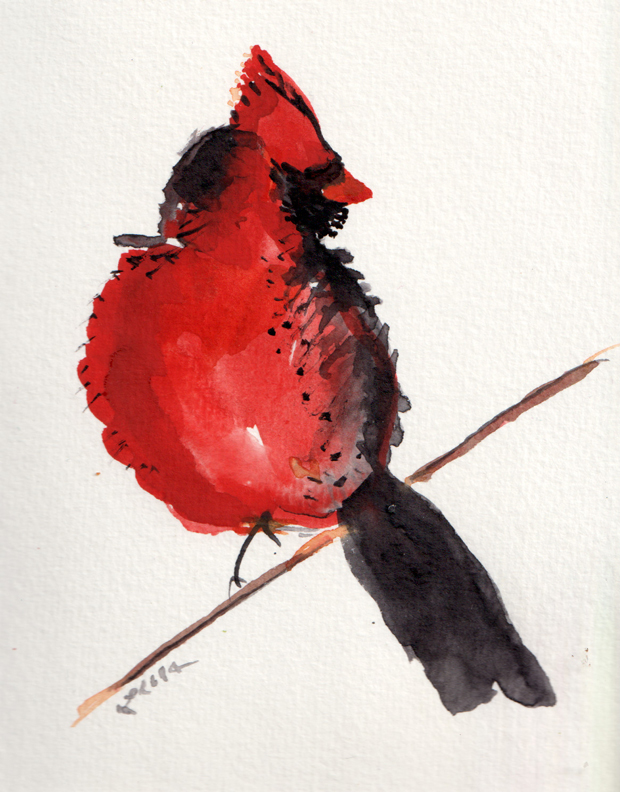
I painted this flaming red male cardinal from one of my photos when the prompt was Bird on a Wire.
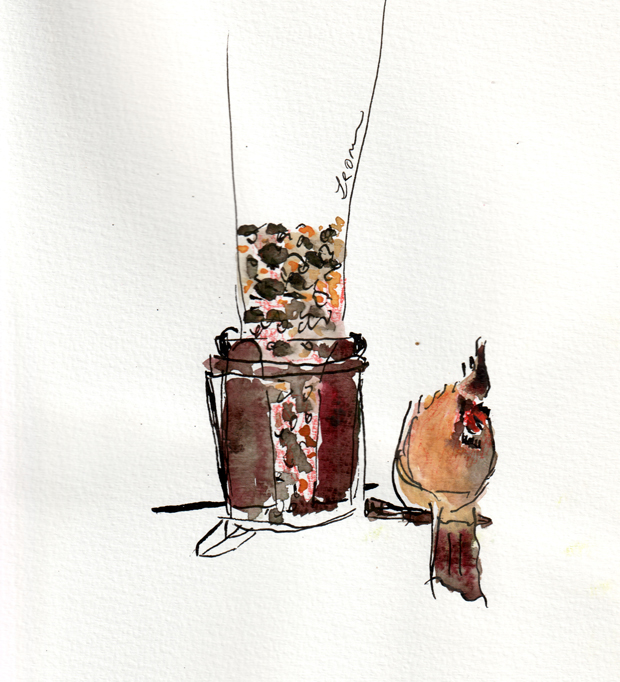
I drew and painted (watercolor, ink, and Derwent Inktense colored pencil on paper) this lady cardinal at a bird feeder in honor of parshat Beshalach, when there is a custom to feed the birds.
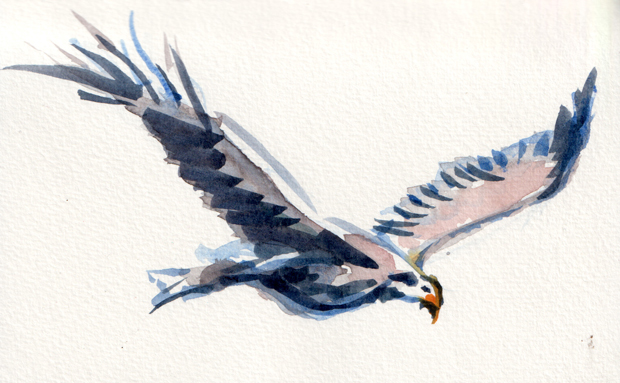
The next week was Parshat Yitro with the quote: And I bore you on eagles’ wings (Exodus 19:4). One eagle is just watercolor on the white of the paper.
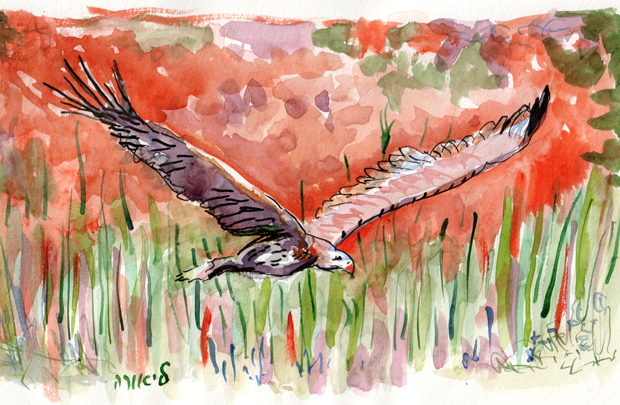
I also did an eagle with an orangey-red background. It came so orange that one friend thought the background was fire. She interpreted it as Israel on fire, and the eagle (perhaps God?) comes to our rescue.
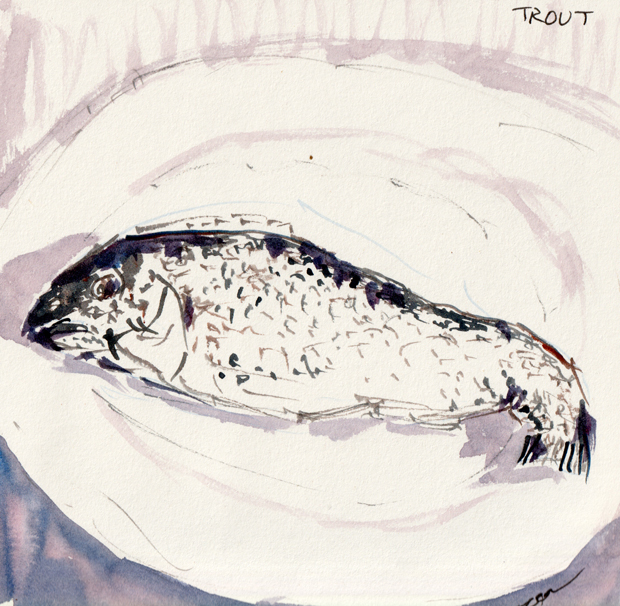
There was a prompt for fish. I painted the trout we had for dinner. Yes, that is all watercolor.
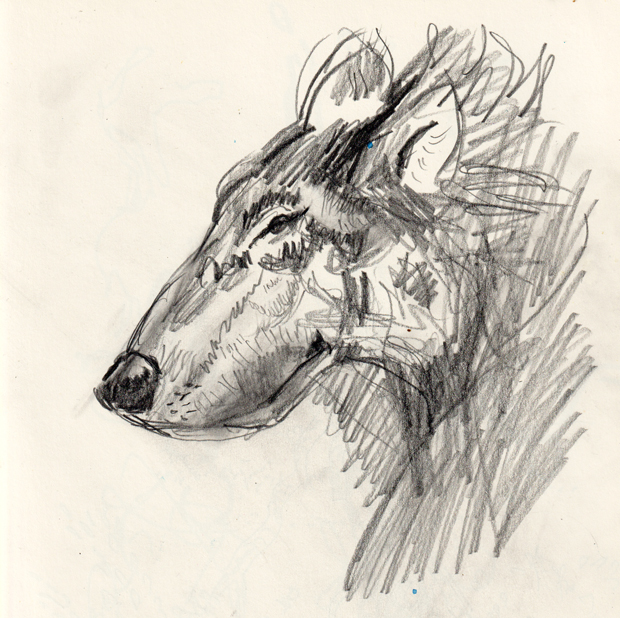
I will conclude with this pencil drawing of a wolf (copy of a drawing by Victor Ambrus), executed for parshat Vayechi 49:7.
Benjamin is a ravenous wolf;
In the morning he consumes the foe,
And in the evening he divides the spoil.”
בִּנְיָמִין֙ זְאֵ֣ב יִטְרָ֔ף בַּבֹּ֖קֶר יֹ֣אכַל עַ֑ד וְלָעֶ֖רֶב יְחַלֵּ֥ק שָׁלָֽל׃
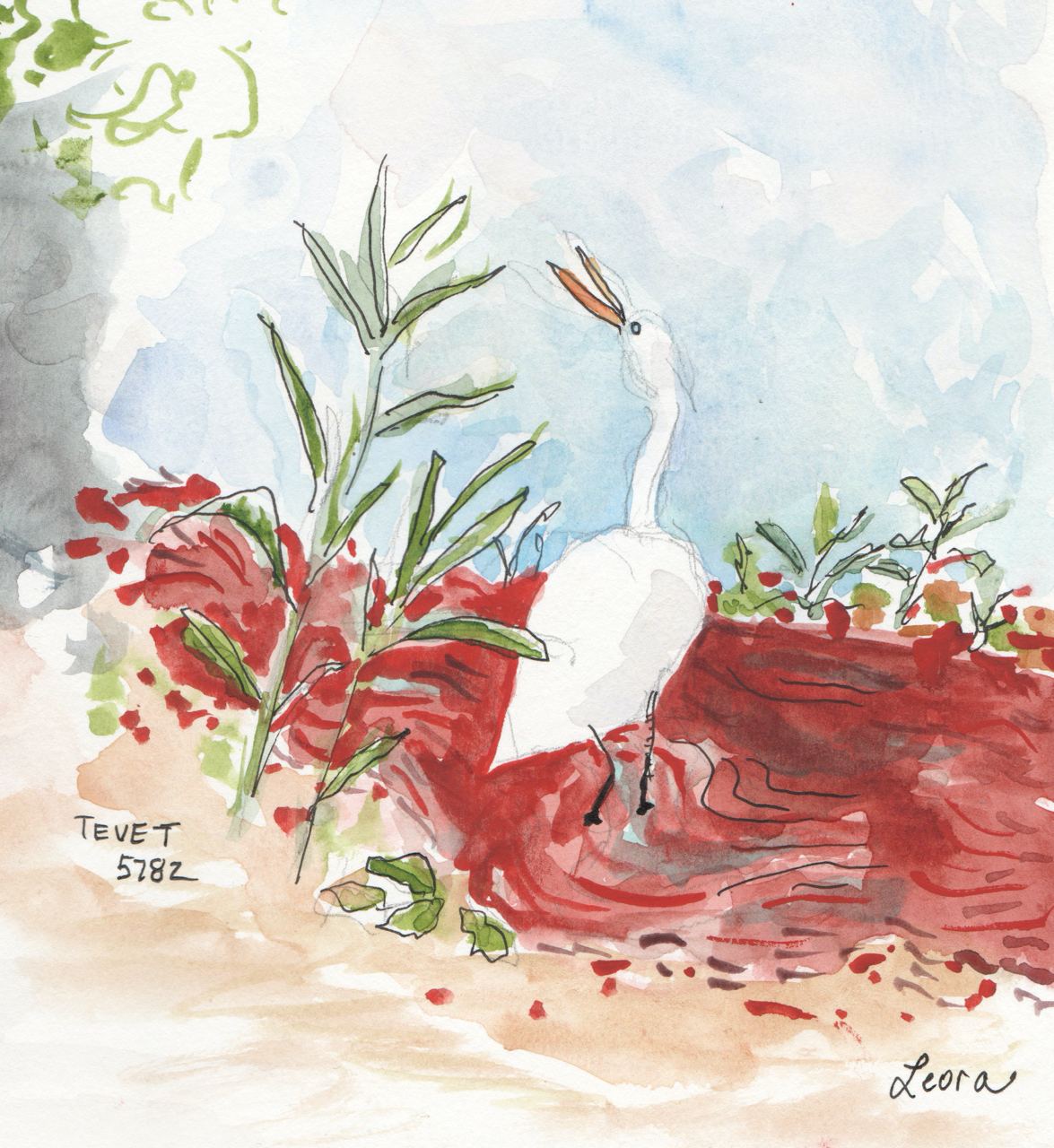
Why do art? And how does one get inspiration? For the first question, I will quote Aleksandr Solzhenitsyn at the end of this post. For the second, I will describe the process of how I created this watercolor.
I painted this watercolor in response to reading about Plague Number One: blood. How does one depict a bloody river Nile? A while back, I painted a dull straight river of blood. I wanted something more watery. I looked at paintings of Winslow Homer and J.M.W. Turner. Both are known for their water scenes. I happened upon a small museum book of Japanese paintings that belonged to my mother z”l. The covered showed an egret (at first, I thought it was a stork — I need to improve my birdwatching skills) bathing in a body of water. Actually, there are two egrets in the scene. I just focused on the right side. The reeds kind of look as how I would imagine greens growing next to the Nile might look. And my friend later told me indeed egrets are found in Egypt.
When I do biblical art, I recently started adding a snippet from a pasuk (a phrase of Torah) to the side of the art. Here is another version of this painting, one that cites the plague of blood:
Parshat Vaera, Shmot 7:21 “and the blood was throughout all the land of Egypt.”
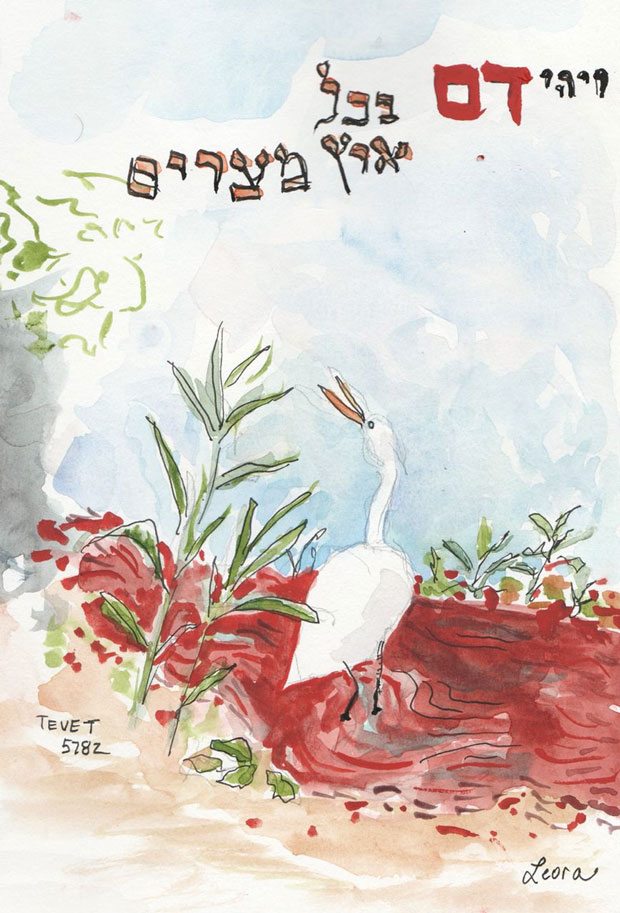
Quotes from Aleksandr Solzhenitsyn’s 1970 Nobel Lecture
Who was Aleksandr Solzhenitsyn? Aleksandr Solzhenitsyn was born in 1918 in Kislovodsk, Russia. In 1945 he was arrested for criticising Stalin in private correspondence and sentenced to an eight-year term in a labour camp, to be followed by permanent internal exile. The experience of the camps provided him with raw material for One Day in the Life of Ivan Denisovich, which he was permitted to publish in 1962. In 1970 he gave a lecture upon receiving the Nobel prize, and the main topic was art.
Not everything can be named. Some things draw us beyond words. Art can warm even a chilled and sunless soul to an exalted experience. Through art we occasionally receive–indistinctly, briefly–revelations the likes of which cannot be achieved by rational thought.
Later in the lecture:
But who will reconcile these scales of values and how? Who is going to give mankind a single system of evaluation for evil deeds and for good ones, for unbearable things and for tolerable ones–as we differentiate them today? Who will elucidate for mankind what really is burdensome and unbearable and merely chafes the skin due to its proximity? Who will direct anger toward that which is more fearsome rather than toward that which is closer at hand? Who could convey this understanding across the barriers of his own human experience? Who could impress upon a sluggish and obstinate human being someone else’s far off sorrows and joys, who could give him an insight into magnitude of events and into delusions which he has never himself experienced? Propaganda, coercion, and scientific proof are equally powerless here. But fortunately there does exist a means to this end in the world! It is art. It is literature.
Source: The Solzhenitsyn Reader, edited by Edward E. Ericson, Jr. and Daniel J. Mahoney
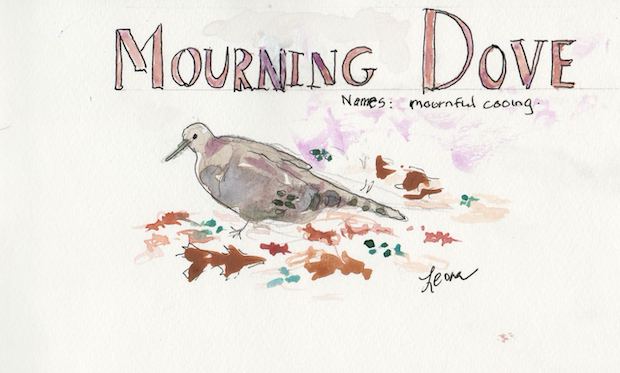
This week a mourning dove was wandering about my front yard. Instead of grabbing a camera and photographing the bird, I took my watercolor sketchpad (Travelogue Artist Watercolor Journal) and used a pencil and pen to draw the bird. I took it back in the house, added a little watercolor to the bird, went back out again to examine the mourning dove carefully. Yes, it did have those spots toward the tail. Yes, they were a shade of darkish gray. Yes, the beak was also darkish gray. Later I looked in my Birds of New Jersey Field Guide by Stan Tekiela and learned more:
Name comes from its mournful cooing. A ground feeder, bobbing its head as it walks. One of the few birds to drink without lifting head.
The one in my yard seemed to have a longer beak than the one pictured in the book.Also, I did not see the bright color in the head that Stan Tekiela showed in his photo. Adding a bit of lavender did seem to match the bird that I saw. However, as an artist one could also say using lavender was artistic license for either shadow or for gradations of hue or saturations.
Do you see birds in your yard? Do see distinguishing marks on the birds, whether color, spots or types of feathers?









